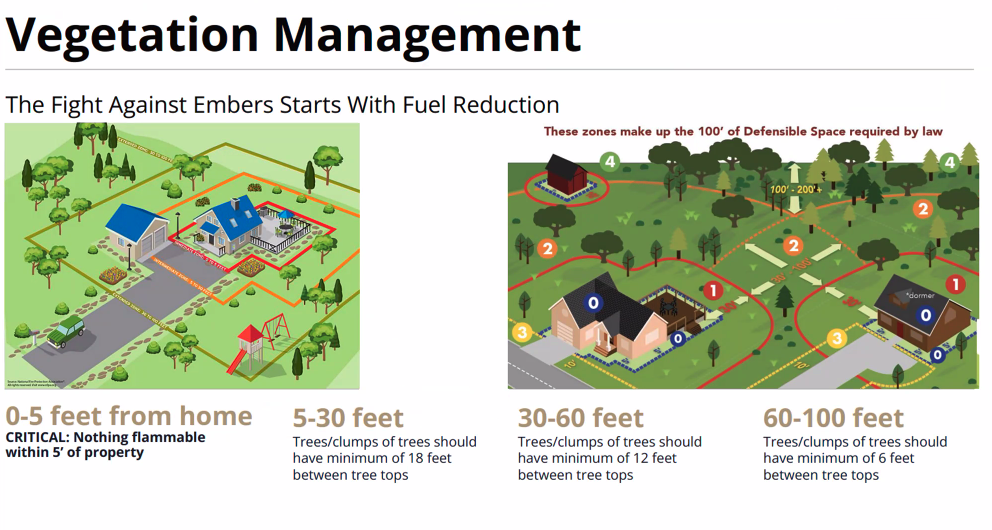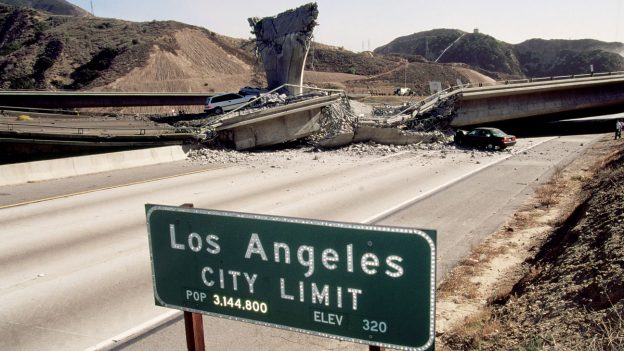It’s been a good 12 years or so….
I had a shocking conversation with someone getting a Ph.D. in emergency preparedness (or something along those lines) from UCLA. He told me that no one is ready for a serious emergency in Los Angeles. And what I took from the conversation was that “no one” included everyone from citizens to the local government.
Every once in a while, I’ll remember something from this conversation and I start thinking about what I should be doing to prepare my family for “The Big One” or other catastrophes.
Luckily, I know one of Southern California’s top experts in emergency preparedness: Susan Trant of 2BeReady.com. I met with her this week and asked her a few questions I had:
What’s the number one thing people should have ready to be prepared? If there is a #1 most important item, what would that be?
Answer: Radio. A regular transistor radio. So you know what’s going on. You’re going to want to know if everything is shut down or is it going to be okay. Because your phone might not work.
The second thing is the paperwork that proves you own your home, and proof that you make money so that you can take a loan out from FEMA. If you don’t have all the sheets of paper to prove this stuff, you’re not going to get any funding.
And be aware that it’s: first in, first out. FEMA will give, say, 10 million to an area for their disaster. If you want a chunk of that money, you got to be able to fill out the application so you can get relief money. If you can’t prove that you’re the homeowner or where your income comes from, it may keep you from getting relief money. Here are some resources and checklists that you should use to make sure you’re prepared..
Red Cross will most likely be giving out food and other basics, you may be able to go to a shelter. Those are the “freebies” that you can expect.
I couldn’t find shelters in Orange County online very easily. I was actually looking for nuclear bomb shelters. What if you needed to go to one of those?
In this scenario, you would shelter in place where you’re at, because the time it would take for you to go out and find shelter – you’d most likely get radiated. When we’re talking about radiation, you want to put on one or two layers of clothes, covering up as much of your skin as possible. Then you want to go deep and below as much concrete as possible. Worse case, head into your bathroom and stay there for a day or two. Take your emergency kits in there.
There’s this program called C.E.R.T. – Community Emergency Response Team. If you take the C.E.R.T. class it doesn’t mean you have to be a part of the team. It’s really helpful because you’ll know all the critical emergency information about the city you live in. I encourage people to take this class. However, it can take six months to get into this class because there’s usually a waiting list.
How many days should you be prepared for?
Experts say to have at least three days. Most kits that are sold out there on the market are for three days, because the first three days you’re not going to get much help. The authorities are going to drive around roads and identify what’s good and what’s not good. What roads can be driven on and which ones can’t. They have to make sure they can rescue people and be sure that access isn’t blocked.
I would say in Southern California, I’d have a month worth of supplies. Most people prep for two weeks. If you think about it, if you can get back into your house, you’ll go into what’s in your refrigerator first. Then you’d use what’s in your freezer next. Then you’d go into your canned goods AND then I would go into my emergency food. Then, after that, I’d go into dehydrated food and MREs.
Is there anything you can recommend people print out? That way, if in an emergency or earthquake with communication and power out, they’ll have important resources available?
When I sell a kit to someone, I give them a packet of information, some instructions on how to handle the disaster. What to do first. What to check for.
There’s this nice little $2 first aid pamphlet that I recommend people get. It’s always good to take a Red Cross training, but if you take C.E.R.T. they teach you that. You will learn CPR (however, you don’t get a CPR card).
I design a plan for my clients. I’ll help you figure out how you’re going to get your water. We’ll determine your meeting spots, who your out of state person is, and make sure you have the right kit sized for your family.
Where do you recommend storing emergency kits?
In the garage or outside if you have a shed.
You have to be careful if you have a shed because of rodents. I had one client that had a shed for their entire emergency kit and provisions, but they had their sleeping bags just sitting up on a shelf. Well, I’ve got news for you. The rats are going to come in if those sleeping bags aren’t closed up in plastic. I recommend a good trashcan. Not those thin ones. It should be an expensive $30 or $40 trashcan.
Sometimes your city will give you an extra trashcan if you ask. They tend to be sturdy.
What do you tell people that have special medical requirements? Say in-home devices that need power or people with special medical issues?
You have to tell the electric and gas company so they know that. They will come since they have you down. Also, you want to notify the police. But, I would get a generator. I recommend Honda because they are quiet. They tend to be expensive, but you could also just get a regular generator (say at Costco).
Now, what I tell people to do is get a tri-fuel converter kit so you can run different fuel. Gasoline, natural gas and propane. You’ll need to find somebody like a mechanic or someone handy to help you install it.
Is it a good idea to have empty containers to hold water?
If you have a hot water heater, there’s a shut off valve up top. You’d shut that off in an emergency. That way you know you have 55 gallons of clean water. Pool water can be a good secondary source of water – but you only have 5 days and then cleansing effects of the chlorination is gone.
I recommend rotating out water and I would stock up on the little five ounces containers of water, which I like better. It keeps rationing top of mind and easier to track.
There are big drums you can buy that are 55-gallon. The water is good for 5-years. You’ll put some preservative in it to keep it potable for 5 years. Then every five years you’ll just throw that water out and start the process over again. I advise people to do this in July and August so they can water plants (and it doesn’t just go to waste).
What comes in your kits?
So I have a nice little fanny pack that’s $29 and it’s got the basic facilities, water, whistle radio, little first aid kit, matches, and a poncho. I try to make it really affordable so people buy it and get it done.
I also make backpacks and bucket kits for four people and runs about $135. I would put that in the trash can and add duct tape and a collapsible water container.
Susan Also Does:
- Neighborhood parties and comes does a similar kind of talk (she doesn’t charge for this).
- Home safety review. She will come to your house and shows you were your shut-offs are, plan out where your meeting spots are, identify who your out of state person is, go through your kits, write a content list of what you have, what you need still.
- Fundraisers for schools. Gives 20% back.
Recap – Important Things To Have To Be Prepared
- A months worth of water for you and your family. Calculate it.
- A radio. You can get a one that is powered with a hand crank. So you don’t have to worry about batteries.
- Important paperwork. Put it in a fireproof safe or container.
- Food. Canned food, dry foods that have a long shelf life, MREs (meals ready to eat).
- First Aid Kit.
- Flashlights. Again, go hand crank powered and it doesn’t hurt to get a good battery powered flashlight.
- A generator (especially if you need to run medical equipment). I really like the tri-fuel kit so you can run propane. You can easily stock up on propane.
- It might be wise to spread your emergency kits around. For example, keep a first aid kit, blanket and a case of water in your trunk. Keep other provisions outside in a good trash can. Keep some in your garage. In an earthquake it’s possible you’re house will burn down, including your garage.
- Know how to shut off your water heater (because it’s a good source of clean water) and your gas lines. They sell a tool at Home Depot that makes turning off these valves quick and easy.
2025 Update – Susan Sent Out An Email With Good Info / Resources
- Checklist of Important Legal Documents and Financial Statements
- Items to Take in Case of Evacuation
- Items to Take in Case of the Need to Evacuate (Blank – You Fill Out)

home vegetation management for forest fires
About the Author: Growing up in Fort Lauderdale Florida where she was exposed to hurricanes – Susan learned the need to be prepared. Seeing businesses, schools, and individuals not know where to begin preparing for a disaster or situations is what led Susan to start this business in 2010. Planning for a natural disaster is many times a “C” List item – until a disaster happens. Be Ready is here to help make it an “A” List item and get it done.
Share This Content:
